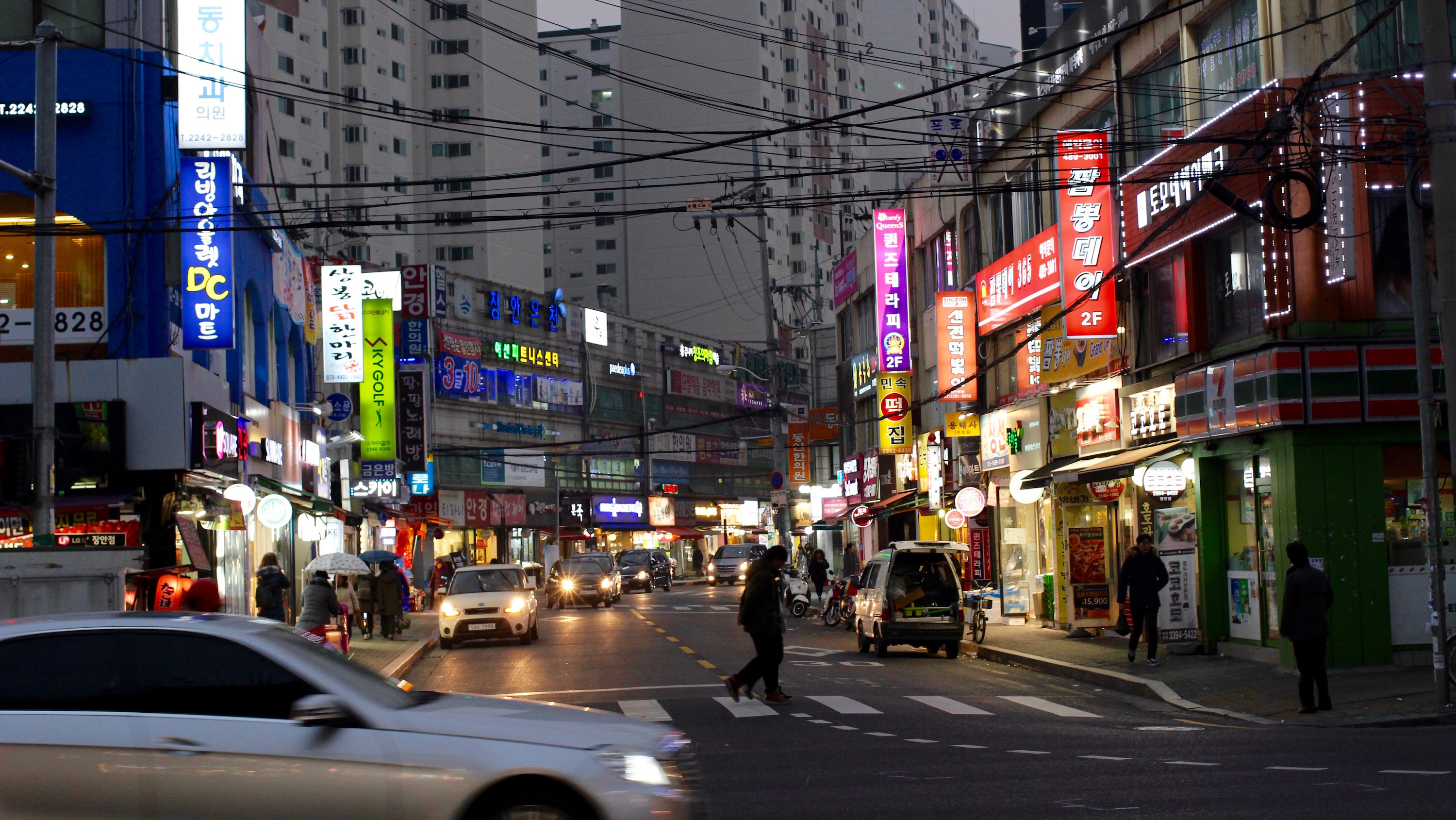
by Casey Walker
I went to Seoul, South Korea in January to visit a good friend at her family’s home. It was my first time traveling to a country outside of the West, and I was excited to see a new part of the world. Food was something I was especially excited about, though I worried because I’d been a vegetarian for several years and was hesitantly transitioning back to eating meat. My friend, also a vegetarian, admitted that she ate meat whenever she was back home in Korea because it was an important part of many dishes and hard to avoid. She was right. By the end of my trip, I’d eaten and enjoyed meat in a way that was much more accessible (and delicious!) than I ever had in the states.
In a country like Korea that’s seeped in deep traditions as well as intense enthusiasm for trends, you could spend a year there and still not try everything you’d want to, but here are of some of the more popular foods you’d encounter spending time in Seoul and tips on how to best enjoy them.
Know how to use chopsticks
You can always ask for a knife and fork, but chopsticks are fairly easy to learn and demonstrate a willingness to learn something from the culture. Coming from a Japanese-American family, I’ve always been accustomed to using chopsticks when eating Asian foods, but even I had to brush up on my grip when eating foods I usually opted for a fork with.
Understand family-style eating
Most of the meals I ate in Korea were served family style, meaning one communal dish was brought to the table. The dish is accompanied by banchan, smaller portions of sides, like kimchi or fresh vegetables.
Change your idea of breakfast
I love American breakfast foods, but in Korea, breakfast generally means savory foods, including rice, hot soups or marinated meats, that they would eat at any other time during the day. I definitely missed my breakfast foods, but by the end of my visit, I was enjoying pork dumplings at 6 a.m.
Be prepared—the food can be very spicy
Red chili peppers are a mainstay in Korean cooking, and the spice profile of a lot of dishes is quite hot. On my first night in Seoul, I overestimated my ability for spiciness and ended up close to tears after a few bites of my food. Pace yourself and work slowly towards eating more spicy foods.
Now, you’re ready to start trying the cuisine:
Korean BBQ (Gogigui)
Even if you’re unfamiliar with South Korean food, you’ve probably heard of KBBQ. Usually marinated, KBBQ consists of tender cuts of meat usually served in small pieces. My favorite was bulgogi, thinly sliced prime cuts of beef marinated in barbecue sauce. As a hesitant meat eater, I found these cuts to be the perfect step for me to ease into barbecue and experience this part of Korean food culture.
Ice Noodles (naengmyeon)
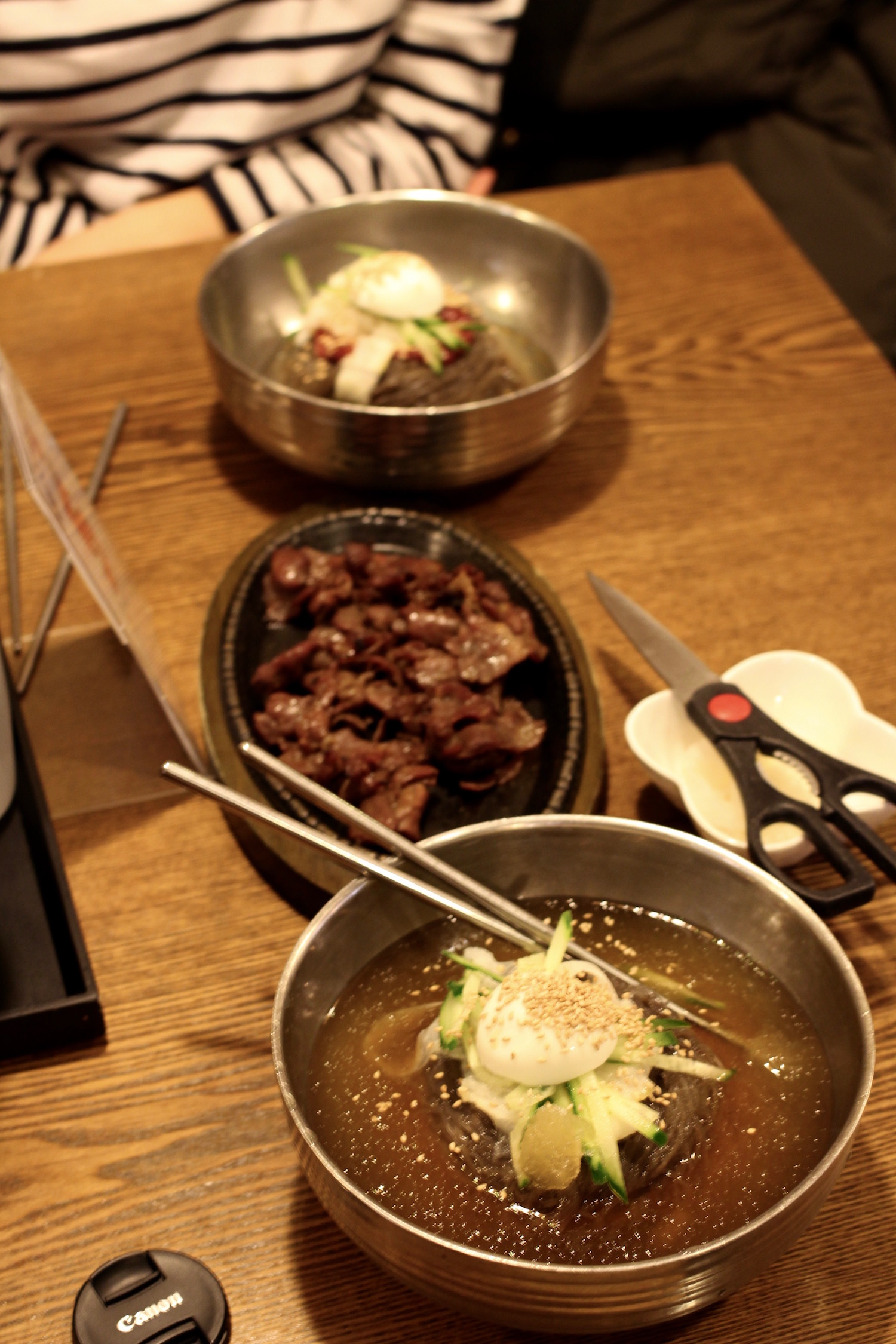
Photo of ice noodles and bulgogi by Casey Walker
Ice noodles come in a cold soup, usually with chunks of ice to keep the dish as cold as possible. You can order these noodles with your choice of meat and choose your level of spice, ranging from mild to hot. I ate ice noodles with bulgogi, and the flavors complemented each other well. I found that I was able to be more adventurous with this dish right away because the temperature made it a lot easier to manage heat from the spice. It was a new experience for me to have an ice-cold, savory meal, so pairing it with something more substantial and hot in temperature was a good way to both fill myself up and also balance the flavors.
Hot Stews and Soups
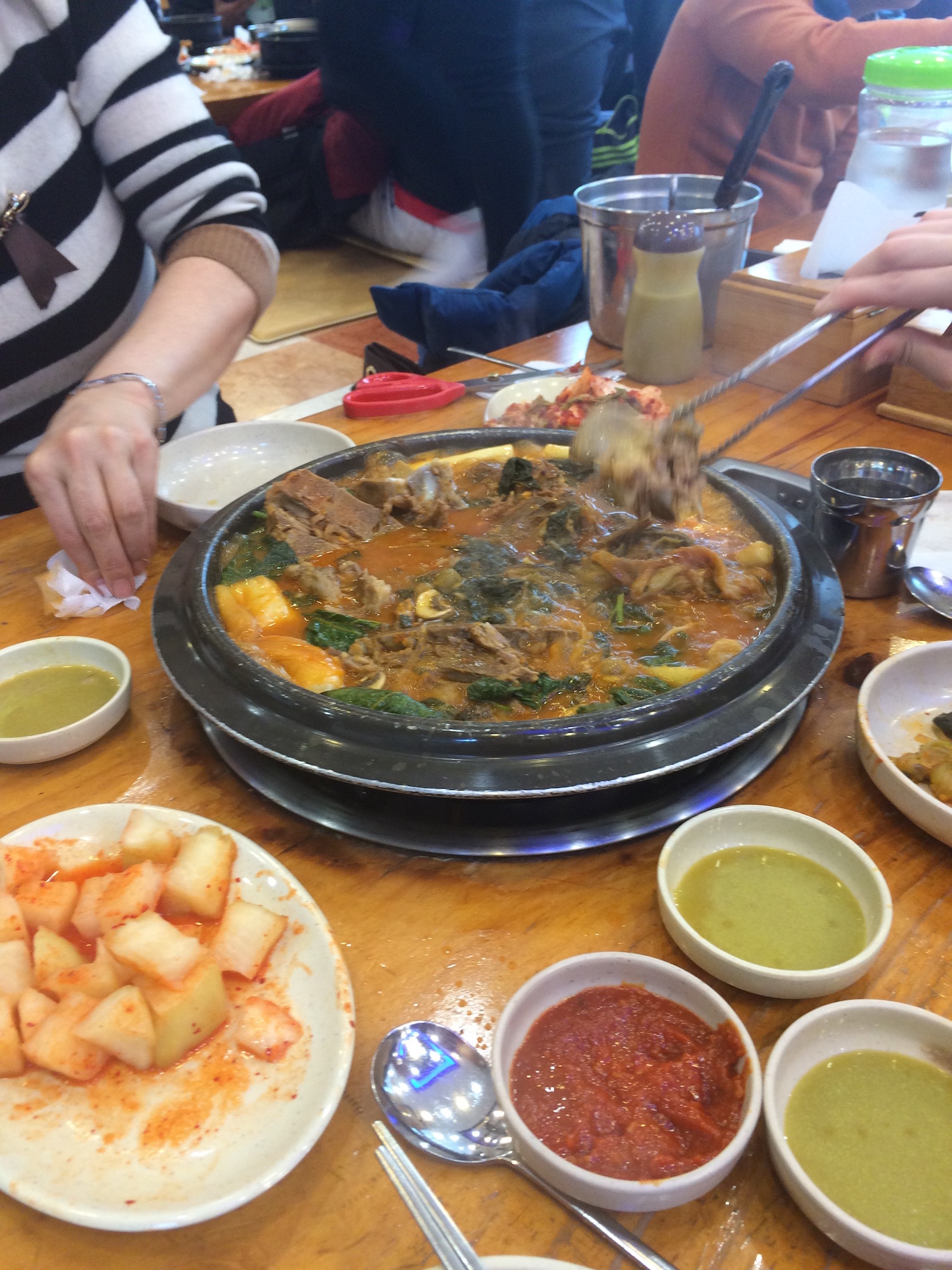
Photo of pork bone soup by Casey Walker
Pork bone soup (gamjatang) was my favorite dish I had while in Seoul. Soups and stews in this style are made by boiling bones for hours so that the flavor works completely into the broth and the meat becomes fall-off-the-bone tender. In addition to meat, the stew can contain rice noodles and vegetables. The broth can be very spicy—having fresh vegetables and cooler banchan like kimchi along with the soup helped me balance out the spice in the meal.
Fried Chicken
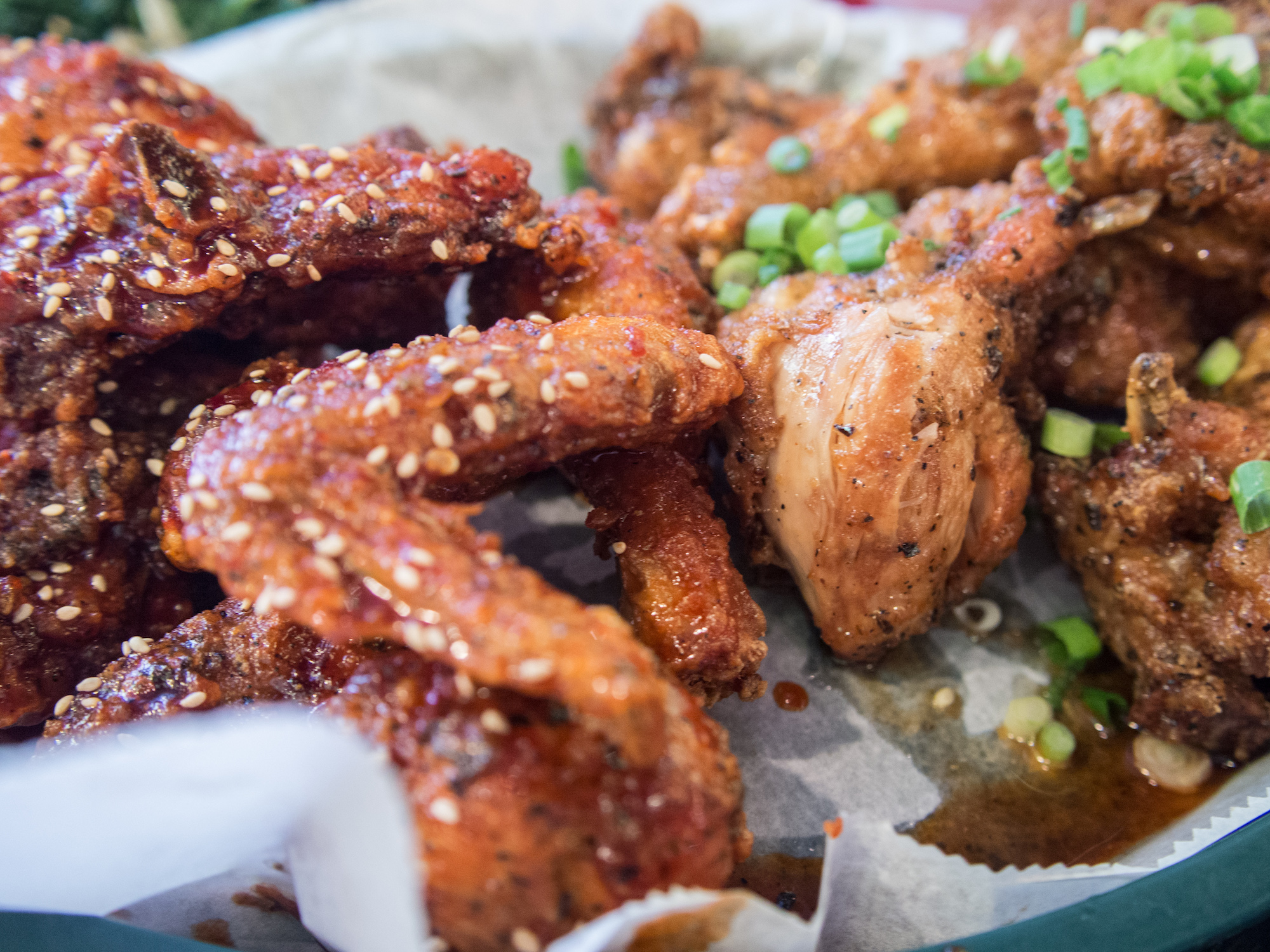
Photo of fried chicken by Edsel Little/flickr
The best thing about Korean fried chicken was, again, the quality of the meat. While poultry production in South Korea is growing and industrial techniques are developing, the use of chemicals in production is still relatively uncommon. The meat comes from a more natural background, so unlike giant American pieces of fried chicken, the drumsticks were about the size of my fist and had a more even texture and flavor. Most people in Korea enjoy fried chicken with beer or soju (a popular Korean liquor).
Street Foods
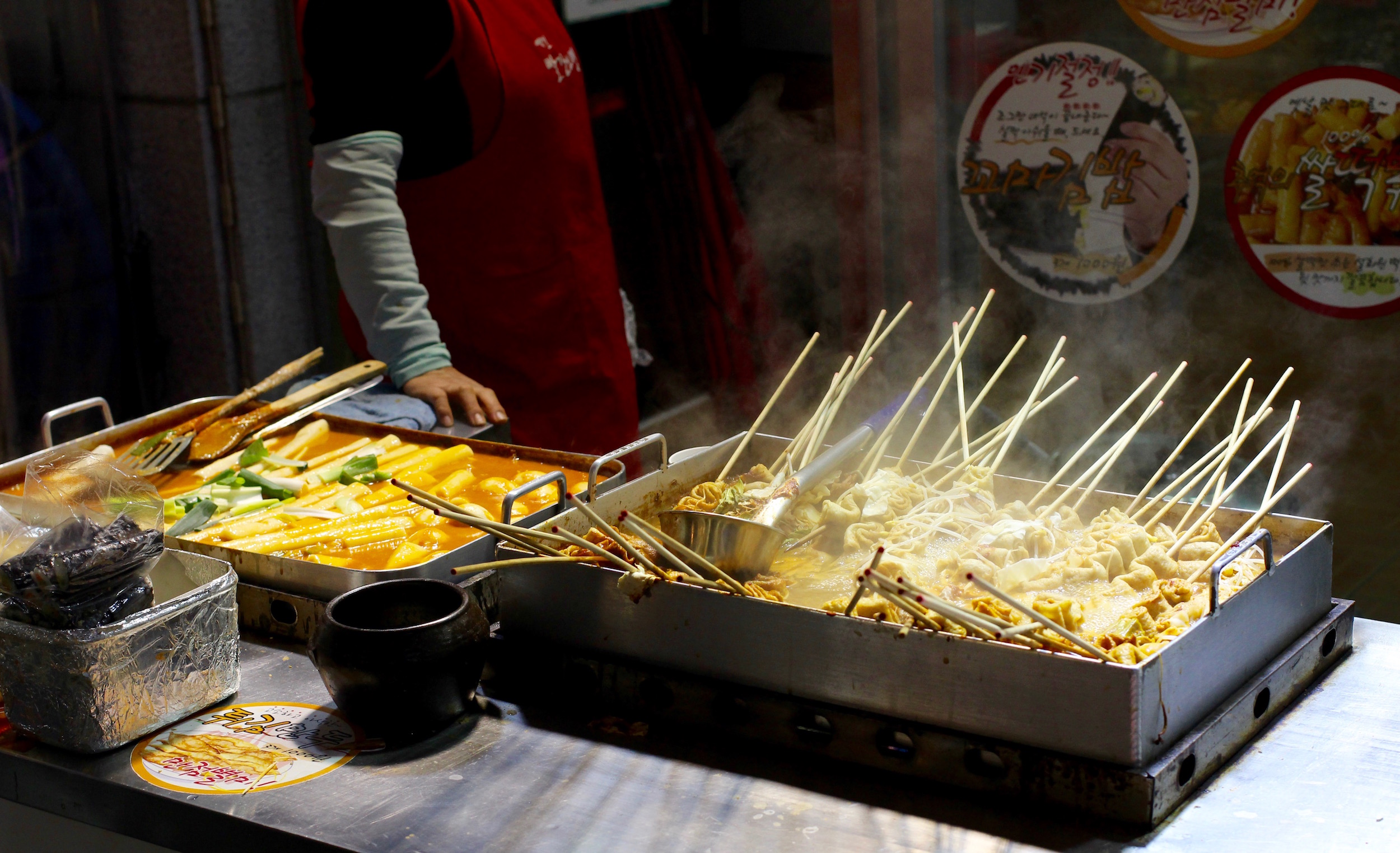
Photo of tteokbokki and odeng by Casey Walker
Street foods in Korea are small indulgences, usually sugar-laden treats like green tea ice cream, or “potato tornadoes,” tempura vegetables and other heavy foods. My favorite street food was tteokbokki, soft rice and fish cakes in a spicy chili sauce. Many street vendors serve this dish alongside tempura vegetables, making it a very heavy and filling snack. My favorite thing about eating tteokbokki was getting used to the spiciness each time and eventually tasting the sweeter, more complex flavors in the gochujang sauce. My friend’s childhood favorite is odeng, a long piece of fish cake skewered and usually simmered in a spicy sauce. It’s best to eat this along with a cup of fish broth from the vendor to was down the spiciness of the bites.
ABOUT THE AUTHOR
Casey Walker currently studies nonfiction writing and publishing at Emerson College. She writes for the Boston music blog Allston Pudding and interns for culture: the word on cheese. She loves all things travel, food and music. Follow her @csywlkr.




